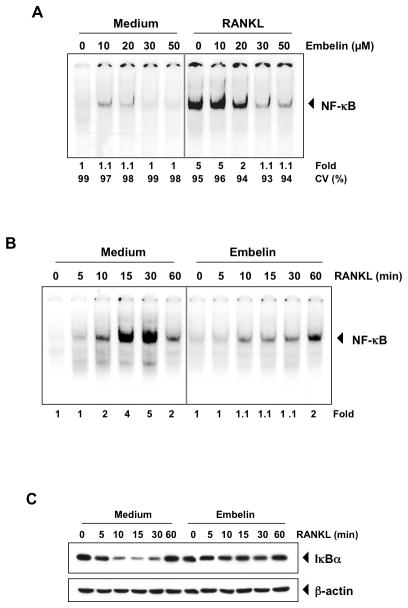Figure 4. RANKL induces NF-κB activation and embelin inhibits it in a dose- and time-dependent manner.
(A) RAW 264.7 cells (1.5×106/ml) were incubated with different concentrations of embelin for 12 h, treated with 10 nmol/L RANKL for 30 min and examined for NF-κB activation by EMSA. Fold value is based on the value for medium (control), arbitrarily set at 1. The cell viability (C.V.) was determined by the trypan blue exclusion assay. (B) RAW 264.7 cells (1.5×106/ml) were incubated with 30 μmol/L of embelin for 12 h, treated with 10 nmol/L RANKL for the indicated times and examined for NF-κB activation by EMSA. Fold value is based on the value for medium (control), arbitrarily set at 1. (C) RAW 264.7 cells (1.5×106/ml) were incubated with 30 μmol/L of embelin for 12 h and treated with 10 nmol/L RANKL for the indicated times. Cytoplasmic extracts were examined for IκBα degradation by Western blot using an anti-IκBα antibody. Anti-β-actin antibody was used as a loading control.

